Disclosure: This article contains affiliate links. We may earn a commission from purchases at no extra cost to you, which helps our travel content.
The taxi driver's weathered hands tapped a syncopated rhythm on his steering wheel as we crossed the Demerara Harbor Bridge, Georgetown's skyline fading behind us. 'First time in Guyana?' he asked, eyes crinkling with amusement in the rearview mirror. I nodded, mesmerized by the labyrinth of waterways stretching toward the horizon. 'Then you don't know Guyana yet,' he laughed. 'Georgetown is just the doorway.' Two weeks later, paddling through the dawn mist of a rainforest river, his words resonated with profound truth. Guyana remains one of travel's best-kept secrets – a wild mosaic where South American jungle meets Caribbean culture, where rivers carve ancient pathways through pristine wilderness, and where adventure doesn't come packaged in glossy brochures but unfolds organically with each passing day. This winter escape from Salt Lake City's snow-packed monotony revealed a landscape that felt both primordial and alive with possibility, a screenwriter's dream of sensory overload where each bend in the river promised another scene worth capturing.
Kaieteur Falls: Where Water Takes Flight
There's something fundamentally humbling about standing at the precipice of the world's largest single-drop waterfall. At 741 feet – nearly five times taller than Niagara – Kaieteur doesn't roar so much as it thunders, a primal sound that reverberates through your chest cavity and silences even the most talkative tour guides.
My journey began with a charter flight from Georgetown's Ogle Airport, a one-hour aerial odyssey over an endless emerald canopy. The pilot, a stoic man named Rohan with forearms like tree trunks, banked our small aircraft suddenly. 'There,' he said, breaking his hour-long silence, pointing toward a distant plume of mist rising above the forest.
The approach offers cinematic views that no photograph could properly capture – the Potaro River winding lazily until its abrupt, dramatic plunge into the gorge below. But it's the landing on the small airstrip and subsequent hike through rainforest that transforms this from tourist excursion to transformative experience.
I spent three hours exploring various viewpoints, from the vertigo-inducing edge to the rainbow-kissed base. At midday, I sat alone at Johnson's View, watching golden frogs no larger than my thumbnail hop between bromeliad leaves, seemingly oblivious to the natural wonder beside them. The falls exist in splendid isolation – no gift shops, no guardrails, just raw, magnificent nature.
As the afternoon light softened, painting the mist in amber hues, I understood why the indigenous Patamona people considered this sacred ground. Some experiences write themselves into your consciousness, demanding to be remembered. Kaieteur is such a place.

💡 Pro Tips
- Book flights at least 2-3 days in advance as they often fill up
- Morning departures offer better photography light and lower chances of afternoon clouds
- Pack light but bring rain protection – weather changes rapidly
Shell Beach: Turtles and Twilight Paddling
The transition from Georgetown's colonial architecture to the wild northwestern coastline feels like traversing between worlds. Shell Beach stretches for some 90 miles along Guyana's Atlantic edge – a critical nesting ground for four endangered sea turtle species and a kayaker's paradise for those willing to make the journey.
Reaching this remote sanctuary requires commitment: a bumpy five-hour drive followed by a two-hour boat ride through mangrove channels. I joined a conservation team led by Romeo, a former fisherman turned passionate turtle protector whose knowledge of these waters bordered on supernatural. 'The leatherbacks,' he explained as we paddled through twilight waters, 'they've been following the same routes for millions of years.'
We made camp at a simple research station run by the Guyana Marine Turtle Conservation Society, where accommodations are basic but the experience is unparalleled. My waterproof dry bag proved invaluable, protecting camera equipment and notebooks from the omnipresent combination of salt spray and sudden tropical downpours.
The magic happens after dark. With red-filtered headlamps (to avoid disorienting nesting turtles), we patrolled stretches of moonlit beach. Around midnight, we witnessed a massive leatherback – nearly six feet long – laboriously excavating her nest in the soft sand. The ancient ritual unfolded over hours: the careful digging, the trance-like laying of perfect white eggs, the methodical covering of tracks. Dawn found me in my kayak again, gliding parallel to the shore as the rising sun illuminated three distinct turtle tracks leading from ocean to dune and back again – nature's calligraphy written in sand.
During daylight hours, I explored the extensive mangrove ecosystems by kayak, navigating channels where the boundary between land and water blurs. The birdlife alone justifies the journey – scarlet ibis flashing like flames against green backdrops, roseate spoonbills feeding in shallow pools, and if you're exceptionally lucky (as I was), the prehistoric silhouette of a jabiru stork standing sentinel in the shallows.
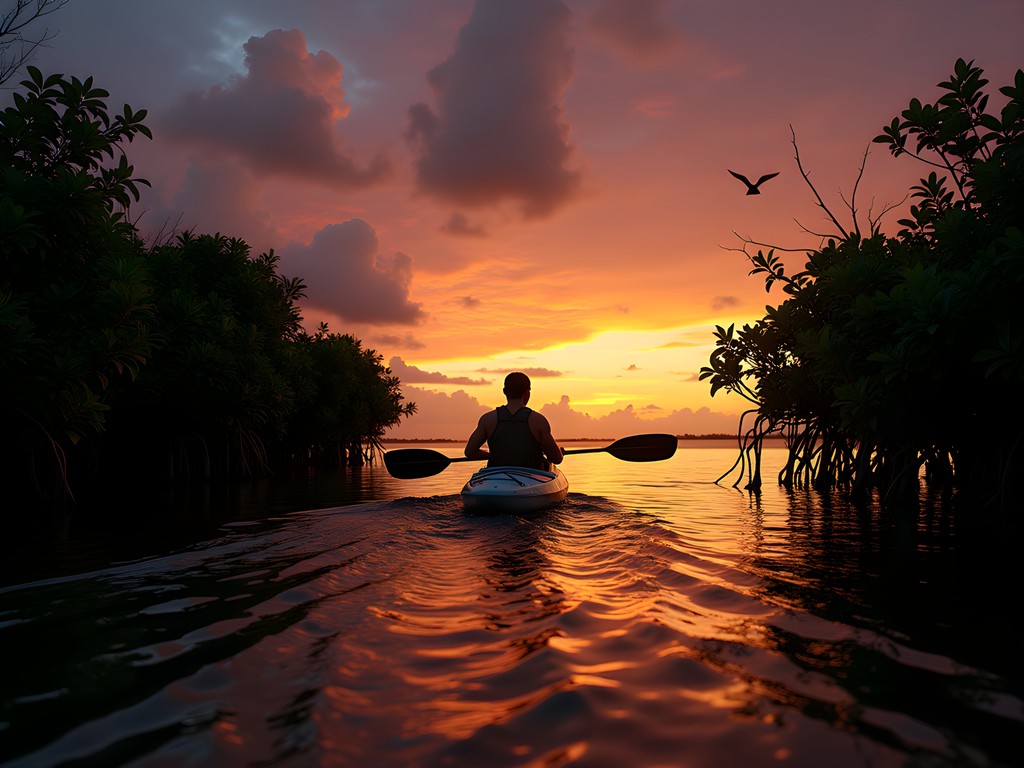
💡 Pro Tips
- Visit between April-August for peak turtle nesting season
- Pack high-quality insect repellent – the sandflies can be relentless
- Arrange permits and guides in advance through conservation organizations
Iwokrama Rainforest: Canopy Walks and Jaguar Tracks
The Iwokrama International Centre sits at the heart of one million acres of protected rainforest – a living laboratory where conservation science meets ecotourism in perhaps the most sustainable model I've encountered in my travels. After the coastal adventures, I was eager to immerse myself in Guyana's interior, where 80% of the country remains cloaked in pristine forest.
The journey from Georgetown takes the better part of a day, following the rutted laterite road that serves as Guyana's main artery to Brazil. As cellphone signals disappeared and settlements grew sparse, I felt that distinctive shift in perception that comes with true remoteness.
Iwokrama River Lodge became my base for five days of exploration. The accommodations strike that perfect balance between comfort and integration with the environment – elevated wooden cabins with screened windows that let in the symphony of forest sounds while keeping out its more intrusive inhabitants. Each morning began with coffee on my porch, watching macaws cross the Essequibo River like living splashes of primary colors against the dawn sky.
The canopy walkway at nearby Atta Lodge provides the forest's most cinematic perspective – a series of suspension bridges hanging 100 feet above the forest floor. From this vantage point, I observed species typically hidden in the upper stories: red howler monkeys, channel-billed toucans, and the elusive cotinga with its electric blue plumage. My compact binoculars rarely left my neck, allowing me to spot details that would otherwise remain invisible secrets of the canopy.
On my third day, guide Lionel Chester (whose Makushi ancestors have moved through these forests for centuries) led me on a tracking expedition. 'Jaguar passed here this morning,' he said matter-of-factly, pointing to impressions in the mud that my untrained eye would have missed entirely. We never saw the cat itself – such encounters are rare gifts of extraordinary luck – but knowing we shared the forest with the Western Hemisphere's apex predator added an electric undercurrent to every snapped twig and rustling leaf.
Nights at Iwokrama offer their own adventures. Armed with high-powered spotlights, we took boat rides along the Essequibo, catching the reflected eyeshine of caiman, fishing bats skimming the water's surface, and once, the unmistakable silhouette of a capybara family at the river's edge. The darkness here is profound, the stars correspondingly brilliant – a screenwriter couldn't design a more perfect setting for contemplating one's infinitesimal place in the universe.
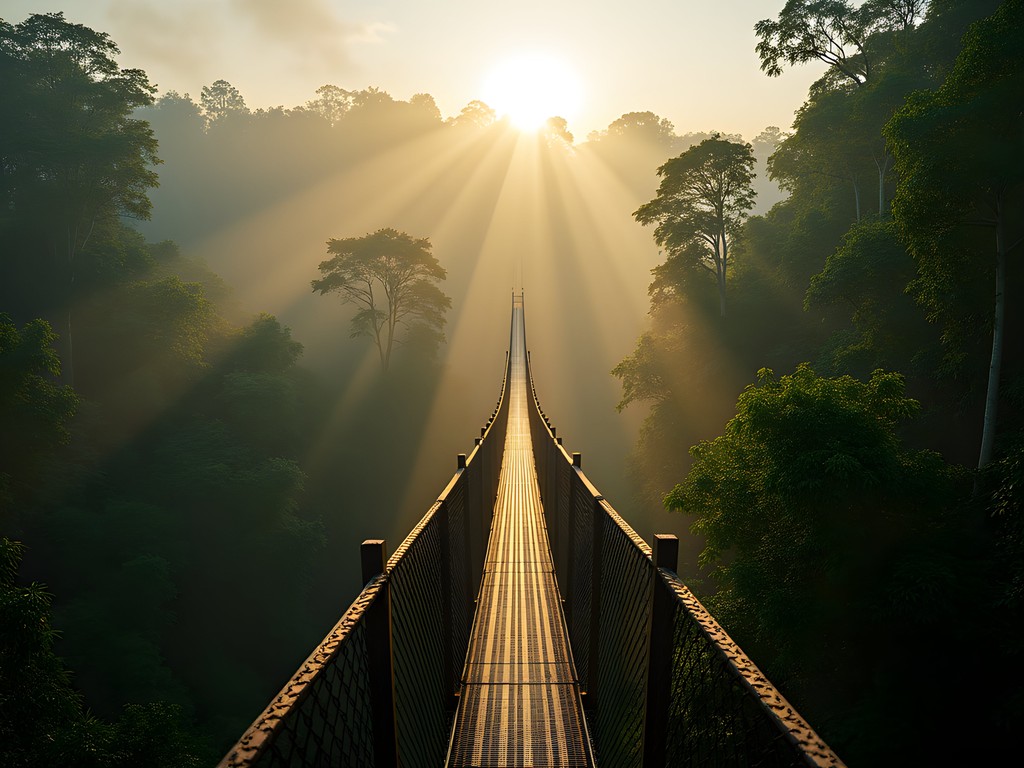
💡 Pro Tips
- Book at least one night at the canopy walkway for dawn wildlife viewing
- Pack lightweight, quick-dry clothing in neutral colors for better wildlife spotting
- Consider splitting time between Iwokrama and Surama Village for cultural experiences
Burro Burro River: The Soul of Kayaking
If there's a single experience that epitomizes why I traded Hollywood's writers' rooms for a life split between Salt Lake City's waterways and the world's wild places, it's paddling the Burro Burro River through the territory of Surama Village. This is kayaking at its most primal – no crowds, no infrastructure, just you, indigenous guides, and a river that feels like it's flowing straight from the beginning of time.
Surama Village, an indigenous Makushi community at the edge of the savannah, offers a rare opportunity to experience traditional culture that hasn't been packaged for tourist consumption. I stayed in the community-run ecolodge, sleeping in a thatched benab (traditional roundhouse) and sharing meals with village residents who've developed one of Guyana's most successful community-based tourism initiatives.
At dawn, I joined guides Kenneth and Franklin at the river's edge, where simple wooden kayaks awaited. 'These waters, they are our highways, our grocery stores, our medicine cabinets,' Kenneth explained as we pushed off into the current. My waterproof action camera captured what my words struggle to convey – the absolute serenity of gliding through a forest corridor where human presence feels incidental rather than dominant.
The Burro Burro offers a masterclass in tropical ecology from water level. Giant river otters appeared around a bend, their curious faces popping up to investigate before disappearing in synchronized dives. Kingfishers executed precision strikes on unseen prey. At one point, Kenneth motioned for silence as we drifted beneath a tree where a two-toed sloth hung motionless, its algae-tinged fur rendering it nearly invisible against the foliage.
We stopped for lunch on a sandbank – fresh-caught fish wrapped in wild banana leaves and grilled over a fire that Kenneth started using techniques passed down through generations. As we ate, he pointed out jaguar tracks pressed into the mud at the river's edge – a reminder that we were guests in a complex ecosystem.
The return journey in late afternoon light transformed the river into a mirror, doubling the forest in perfect reflection. We paddled in companionable silence, the rhythm of our strokes and the occasional call of a screaming piha the only sounds breaking the cathedral quiet. In an age of constant connectivity and sensory overload, the Burro Burro offers something increasingly precious – the space to hear yourself think.
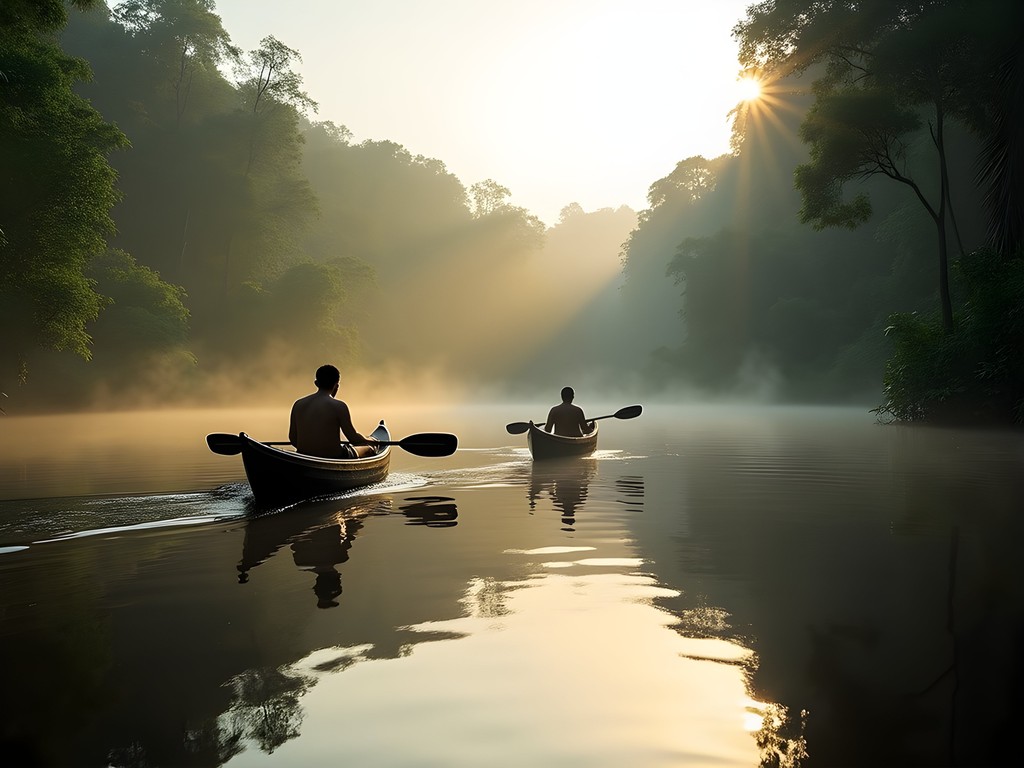
💡 Pro Tips
- Arrange river trips through Surama Ecolodge at least a day in advance
- Early morning departures offer the best wildlife viewing opportunities
- Pack extra water and sun protection – the combination of reflection and equatorial sun is intense
Rupununi Savannah: Cowboys and Wetland Wonders
The geological schizophrenia of Guyana reveals itself most dramatically when you emerge from the rainforest onto the Rupununi Savannah – an ecosystem so different it feels like you've crossed into another country entirely. This vast grassland, punctuated by termite mounds and lonely trees, shares more ecological DNA with the Serengeti than with the jungle you've just left behind.
Karanambu Lodge, once the home of renowned conservationist Diane McTurk, sits at the savannah's heart along the banks of the Rupununi River. The collection of thatched cottages offers rustic comfort and a window into one of South America's most unique ecosystems. I timed my visit for January, when seasonal rains transform portions of the savannah into wetlands teeming with migratory birds and aquatic life.
Exploration here takes many forms. Morning drives across the savannah reveal giant anteaters, their distinctive silhouettes moving through golden grass like creatures from a prehistoric era. Horseback riding alongside local vaqueros (cowboys) offers insight into the ranching culture that has existed here for generations – a blend of indigenous knowledge and practices introduced by European settlers centuries ago.
But it's the wetland boat safaris that showcase the Rupununi's most spectacular offerings. Gliding through channels flanked by towering jabiru stork nests, I witnessed birdlife in numbers that defied comprehension. The region hosts over 600 bird species, from the prehistoric-looking hoatzin (locally called 'stinkbird' for its distinctive odor) to the elegant jabiru stork with its massive black-and-red bill.
One afternoon, guide Salvador stopped our boat and pointed to ripples in the water. 'Black caiman,' he whispered. The massive reptile – South America's largest predator – surfaced briefly, its primordial eyes regarding us with cold calculation before slipping beneath the surface. Minutes later, a family of giant river otters appeared, their playful behavior belying their status as formidable hunters.
Evenings at Karanambu unfold with sundowners on the veranda, watching the savannah transform under spectacular sunset displays. Conversations with researchers and guides reveal the complex conservation challenges facing this region, from balancing cattle ranching with wildlife protection to mitigating the impacts of gold mining operations further afield. My portable solar charger proved invaluable here, where generator power runs only during specific hours and keeping camera batteries charged is essential for capturing the region's photographic bounty.

💡 Pro Tips
- Visit during December-April for optimal wildlife viewing in the wetlands
- Pack neutral-colored clothing that covers arms and legs for protection from sun and insects
- Bring cash as credit cards aren't accepted at many lodges in the interior
Mount Roraima Trek: Walking on the Lost World
Sir Arthur Conan Doyle's 'The Lost World' was inspired by reports of Mount Roraima, and standing at its base, it's easy to understand why. The flat-topped tepui rises from the savannah like a fortress from another dimension, its sheer cliffs draped in cascading waterfalls that seem to pour directly from the clouds.
While most travelers access Roraima from Venezuela, the Guyana route offers something special – a challenging, less-traveled path that combines physical endurance with cultural immersion. The seven-day trek begins from the indigenous village of Philipai, where Patamona guides lead small groups through terrain that shifts from savannah to cloud forest to the otherworldly summit.
I won't sugarcoat it: this is the most physically demanding adventure on this list. Days involve 6-8 hours of hiking through terrain that ranges from muddy forest paths to near-vertical rock faces where you'll use fixed ropes for assistance. Nights are spent in basic camps, sometimes in caves or under rock overhangs, where temperatures can drop dramatically after sunset.
But the rewards defy description. After three days of ascent, you emerge onto a landscape that feels like another planet – a moonscape of black rock, crystal pools, and endemic plants found nowhere else on Earth. Strange rock formations, carved by millennia of wind and rain, create a natural sculpture garden. The 'crystal valley' glitters with thousands of quartz formations, while carnivorous plants wait in patient hunger for unsuspecting insects.
The summit plateau straddles the borders of Guyana, Venezuela, and Brazil, though boundary markers are the only human constructions you'll encounter in this pristine wilderness. My guide, Moses, a Patamona elder who had made this journey countless times, still approached the mountain with reverent respect. 'The old people say the mountain thinks,' he told me one evening as we sheltered from rain. 'It knows who climbs it and why.'
The descent reveals new perspectives – literally and figuratively. Views across the Gran Sabana stretch to the horizon, a patchwork of green and gold bisected by silver ribbons of distant rivers. By the time you return to Philipai, muscles aching but spirit soaring, you understand why indigenous cultures consider Roraima the 'Mother of All Waters' – a sacred place where clouds are born.
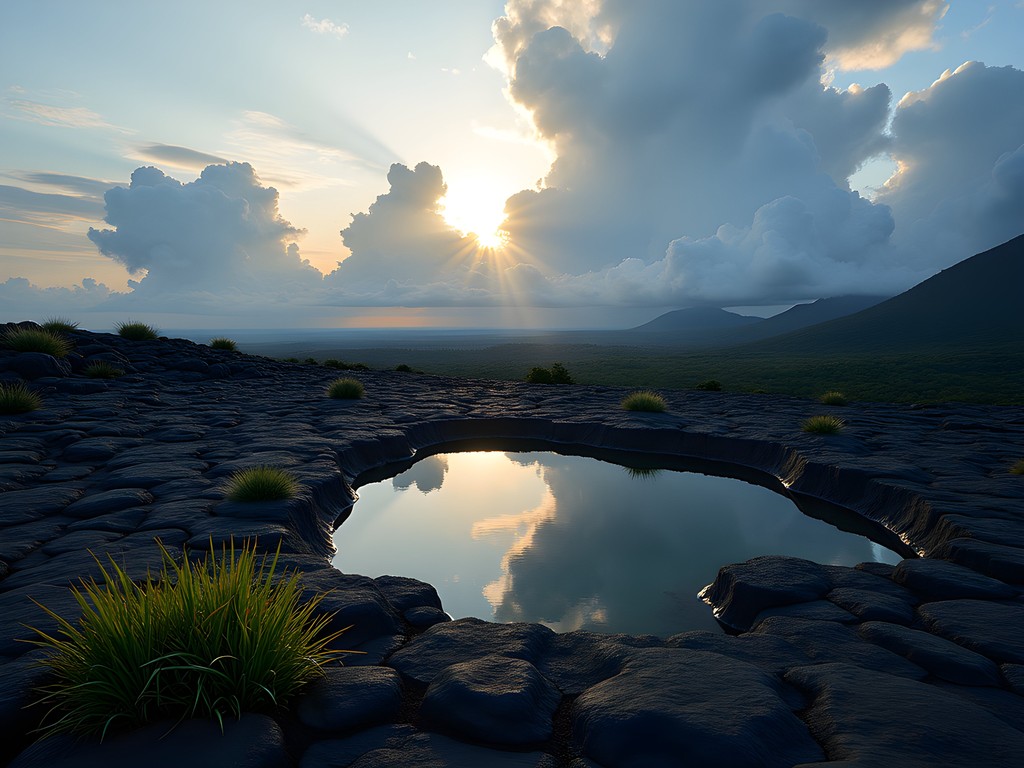
💡 Pro Tips
- Book this trek at least 3 months in advance as permits are limited
- Train for steep ascents and descents before attempting this challenging trek
- Pack layers for dramatic temperature changes between day and night
Georgetown's Urban Waterways: Kayaking Through History
After two weeks immersed in Guyana's wild interior, returning to Georgetown feels like emerging from a dream. But the capital itself offers aquatic adventures worth exploring before departure – perfect for acclimatizing to urban rhythms while maintaining connection to the country's defining relationship with water.
Georgetown sits below sea level, protected by a complex system of canals, kokers (sluices), and sea walls designed by Dutch colonists. These waterways tell the story of the city's evolution from plantation economy to modern capital, and exploring them by kayak offers a unique perspective on urban history.
I joined a dawn paddle organized by the Guyana Rowing Association, launching from the National Park into canals that bisect the city's historic districts. Paddling past colonial mansions with their distinctive wooden architecture, I gained appreciation for Georgetown's nickname – 'Garden City of the Caribbean.' Massive Victoria amazonica water lilies, Guyana's national flower, create floating islands large enough to support a small child (though I wouldn't recommend testing this).
The route eventually leads to the Demerara River, where the scale shifts dramatically. Massive cargo ships and fishing vessels navigate channels where kayakers hug the shoreline. From water level, the iconic Stabroek Market's cast-iron clock tower rises like a Victorian sentinel, while vendors set up stalls along the seawall, preparing for the day's commerce.
For a final adventure, I arranged an afternoon paddle to the Guyana Mangrove Reserve, just outside the city limits. Here, dense mangrove forests provide critical protection against coastal erosion while hosting a remarkable diversity of wildlife. Guide Annette Arjoon-Martins, a passionate conservationist, pointed out fiddler crabs performing their synchronous dancing and scarlet ibis returning to roost as the sun began its descent.
As dusk approached on my final evening, I found myself at the seawall where locals gather for the sunset ritual. Children flew homemade kites, couples strolled hand-in-hand, and food vendors created a movable feast of curry, roti, and ice-cold Banks beer. The massive Demerara River emptied into the Atlantic before me – a fitting final image of a country where water shapes everything from geography to culture.
My waterproof smartphone case allowed me to capture these final moments without worry, preserving images of Georgetown's unique relationship with the waters that both threaten and sustain it.
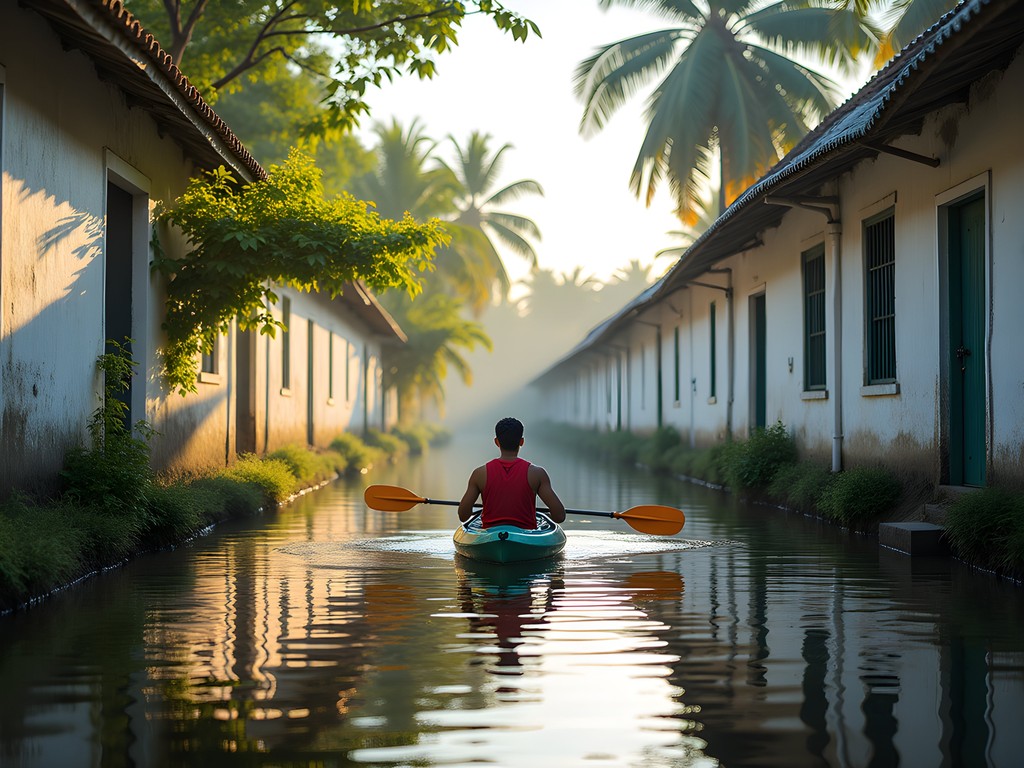
💡 Pro Tips
- Arrange urban kayaking tours at least 24 hours in advance through hotels or the rowing association
- Early morning offers calmer waters and cooler temperatures
- Bring sun protection – there's little shade on Georgetown's waterways
Final Thoughts
As my flight lifted off from Cheddi Jagan International Airport, banking over the Demerara River one last time, I thought about that taxi driver's words on my first day: 'Georgetown is just the doorway.' He was right, of course. Guyana doesn't reveal itself easily to visitors seeking packaged experiences or Instagram moments. It demands engagement – with its landscapes, its people, its contradictions. The rewards for this engagement are immeasurable: adventures that feel genuinely exploratory, encounters with wildlife unaccustomed to human presence, and the rare privilege of experiencing ecosystems still functioning as they have for millennia. For couples seeking adventure beyond the ordinary, Guyana offers something increasingly precious in our hyperconnected world – the chance to be genuinely surprised, challenged, and transformed by a place that hasn't been curated for tourist consumption. Pack your sense of adventure, leave your expectations behind, and step through Georgetown's doorway into Guyana's wild heart. The script that unfolds will be entirely your own.
✨ Key Takeaways
- Guyana offers world-class adventure opportunities with fraction of crowds found elsewhere
- Combining coastal, rainforest and savannah experiences provides the most complete understanding of the country's diversity
- Community-based tourism initiatives like those in Surama provide the most authentic and sustainable travel experiences
📋 Practical Information
Best Time to Visit
December-April (dry season)
Budget Estimate
$150-250/day for mid-range accommodations and guided activities
Recommended Duration
14-16 days
Difficulty Level
Moderate To Challenging


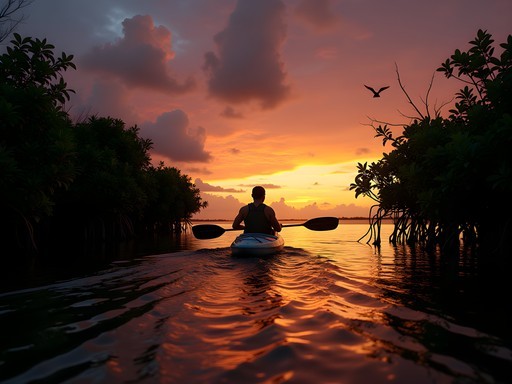
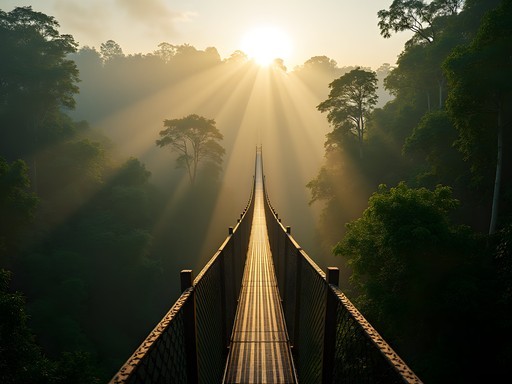
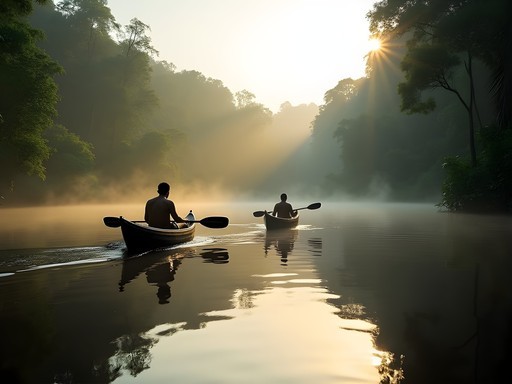
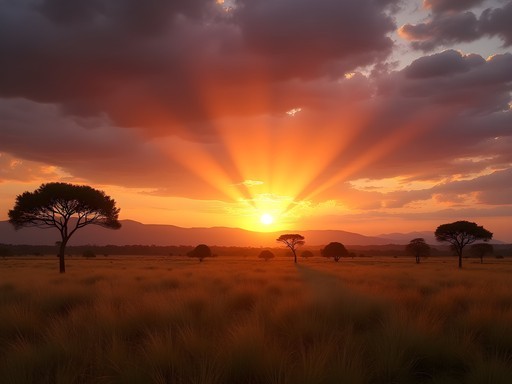
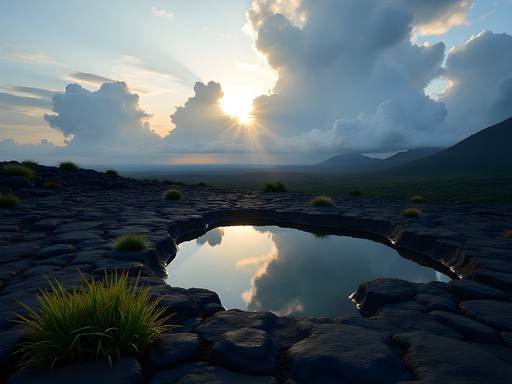


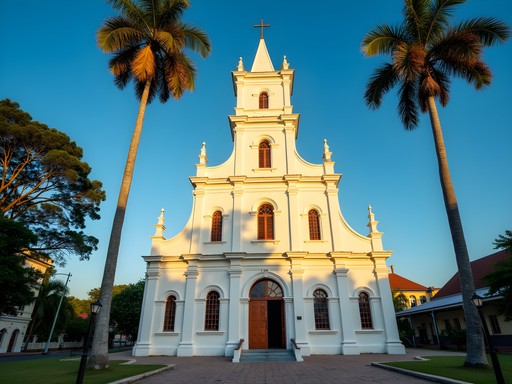
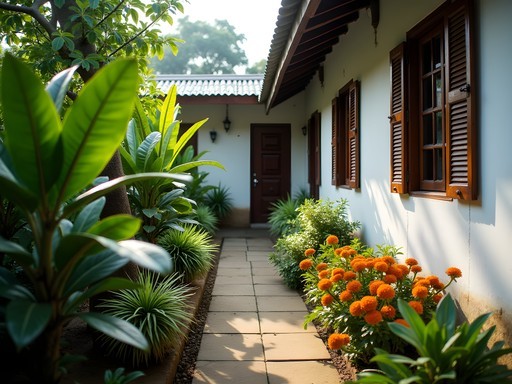
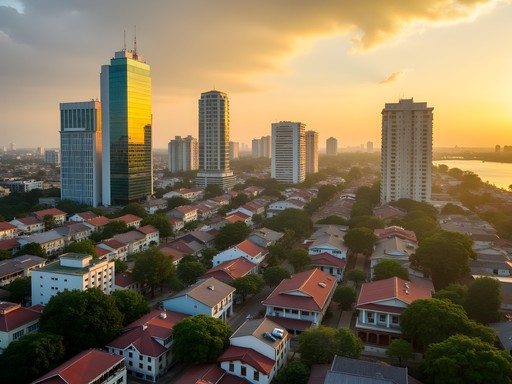
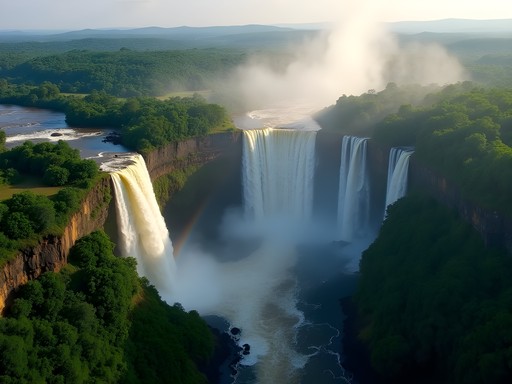
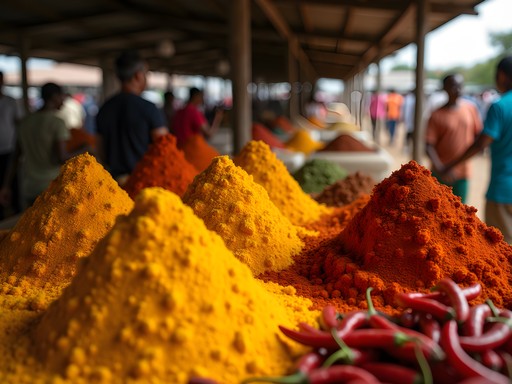



Comments
cooladventurer
Great post! How did you handle transportation between these places? Rental car or local drivers?
coolgal
Just got back from Kaieteur Falls last month and it was MIND-BLOWING! The scale of it doesn't translate in photos. We took the small plane tour from Georgetown and I was terrified (tiny plane!) but the views were worth it. The golden frogs Mason mentioned are so tiny but our guide spotted them instantly. Pro tip: book the first morning flight if possible - we had the entire falls to ourselves for almost an hour before other groups arrived.
summermood
That sounds incredible! Was the flight expensive?
coolgal
It was about $220 USD round trip, which isn't cheap but totally worth it for a bucket list experience! They need minimum 5 passengers to fly so try to book in advance.
Mason Grant
So glad you got to experience Kaieteur! That morning light hitting the falls is something else, isn't it? I still dream about that golden mist rising from the bottom.
summermood
This looks amazing! How safe is it for solo female travelers? I've been wanting to visit Guyana but heard mixed things about safety in Georgetown.
Gregory Boyd
I've been to Georgetown three times now as a solo traveler. The city itself requires normal urban precautions - don't flash valuables, use registered taxis, etc. But once you're on these outdoor adventures Mason describes, you're with guides and generally very safe. The Shell Beach turtle watching was one of my favorite experiences ever!
summermood
Thanks Gregory! That's really helpful. Did you organize your trips independently or through a tour company?
Gregory Boyd
I used a local operator called Wilderness Explorers for Kaieteur and Iwokrama. They're excellent! For Shell Beach, you pretty much have to go with guides from the conservation group that protects the turtles. Worth every penny!
travelwithme365
If you're heading to Kaieteur Falls, try to go on a clear day! We got unlucky with some fog and while still amazing, we missed some of the views. Also, the hike is short but steep in parts, so wear good shoes!
backpack_wanderer
How safe did you feel in Georgetown and the surrounding areas? Traveling solo and a bit concerned about safety.
nomadnomad
Not OP but I felt pretty safe in Georgetown last year. Just use common sense - don't flash valuables, use registered taxis, stay in well-lit areas at night. The locals were super friendly and helpful!
backpack_wanderer
That's reassuring, thanks! Did you go to any of these outdoor spots alone or with a guide?
nomadnomad
Definitely used guides for all the outdoor adventures. Not really places you can or should explore solo, but there are lots of reputable tour operators in Georgetown.
adventure_mom
Love the photos of Shell Beach! Those turtles are incredible!
Taylor Moreau
Excellent write-up, Mason! Your description of the Iwokrama Rainforest brought back vivid memories of my own visit there last autumn. The canopy walkway is indeed spectacular, though I'd add that visitors should bring their compact binoculars as the birdwatching opportunities are extraordinary. I spotted six species of toucans and the elusive Guianan Cock-of-the-rock during my three days there. For those considering this trip, I recommend allocating at least 2-3 nights at the research station to fully appreciate the biodiversity. The guides' knowledge of the forest ecosystem is remarkable.
jungle_explorer92
Was the accommodation comfortable at the research station? I'm not really into roughing it too much!
Taylor Moreau
Basic but comfortable. Private rooms with en-suite bathrooms, mosquito nets, and ceiling fans (no AC). The food was surprisingly good - lots of local dishes. It's not luxury but certainly not roughing it either.
nomadnomad
This is amazing! Planning to visit Georgetown next spring. How difficult was it to arrange transportation to Kaieteur Falls? Did you book in advance or when you got there?
Taylor Moreau
I visited Kaieteur last year and booked through a local operator in Georgetown called Wilderness Explorers. Definitely book at least a week in advance as flights fill up quickly, especially in high season. The small planes only go a few times weekly.
nomadnomad
Thanks for the tip! Will definitely look them up. Was it expensive?
Taylor Moreau
It's not cheap - around $200-250 USD for the day trip, but absolutely worth every penny. The falls are simply spectacular and the flight over the jungle gives you incredible perspectives you can't get any other way.
Casey Andersson
Mason, your piece transported me right back to Guyana! I stayed at Iwokrama last year and that canopy walkway was a highlight of my entire South American journey. We spotted 27 bird species in one morning including the elusive Guianan Cock-of-the-rock with its brilliant orange plumage. For anyone heading there, I'd recommend spending at least 2 nights at the research center. The night walks reveal a completely different forest - we saw tree frogs, kinkajous, and even a margay! Also worth noting that the road between Georgetown and Iwokrama can be quite challenging during rainy season - our driver was practically a magician navigating those mud pits. But the journey is absolutely part of the adventure in Guyana.
photomaster
Casey - did you find the humidity affected your camera gear? I'm worried about condensation issues when moving between air-conditioned rooms and the jungle.
Casey Andersson
Absolutely! Silica gel packets were my best friends. I kept my gear in a dry bag with desiccants when not in use. Also, let your camera acclimate gradually rather than going straight from AC to jungle. The staff at Iwokrama were used to photographers and provided a dry storage cabinet for overnight.
photofan
Those jaguar tracks look incredible! Did you actually see one??
Venture X
Premium card with 2X miles, $300 travel credit, Priority Pass